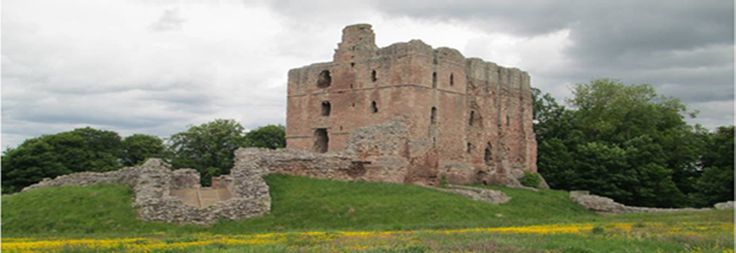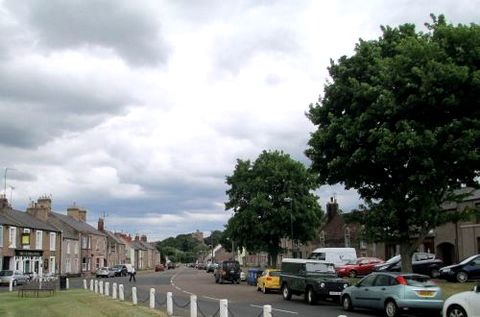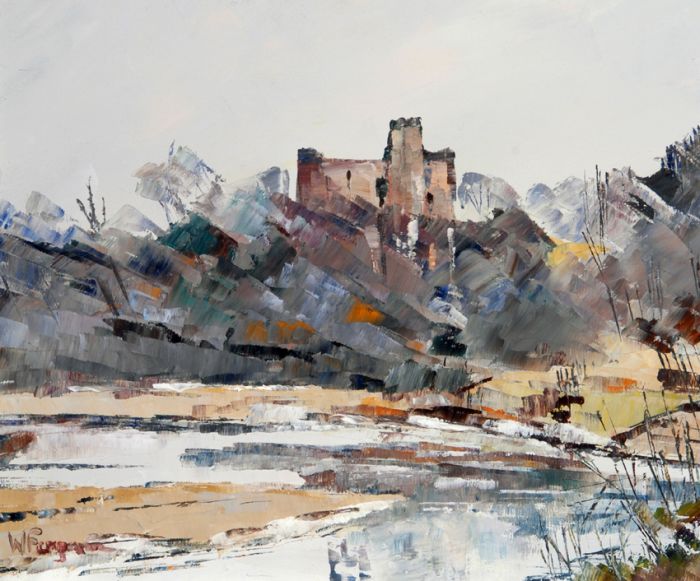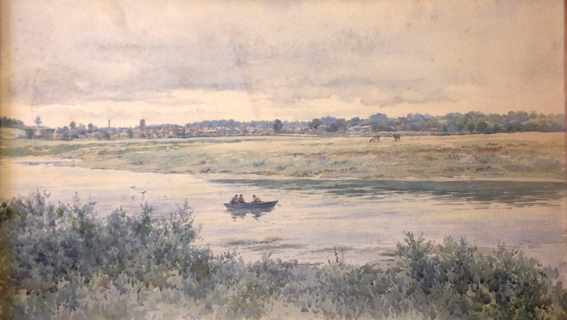The first stone church in Norham was built by Bishop Ecgred of Lindisfarne in 830 AD, and was thought to be located beneath the Yew trees to the east of the present church. In the 9th century the monks from Holy Island rested the body of St Cuthbert here whilst evading the depredations of the Vikings, en route to the final resting place of Durham Cathedral. The current parish church is dedicated to Saints Ceolwulf, Peter and Cuthbert. It was built in the 12th century in the Norman style, and fortified by Robert the Bruce when he used it as his headquarters to lay siege to the castle in 1318 and again the following year. It was extended in the 17th and 19th centuries to the building which we see today. This is the only surviving church in the village, which previously hosted a Methodist Church, a Presbyterian Church of England, and the North and South churches which were combined to become the United Free Church and then the United Reformed Church in 1971.
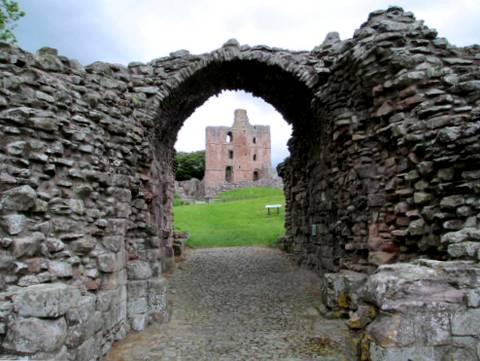 By 1050 the village was called ‘Northam’ (North Homestead) in recognition of its being one of the most northerly areas of responsibility of the Prince Bishops of Durham. It was then an outpost of County Durham and as such was not really part of Northumberland at all.
By 1050 the village was called ‘Northam’ (North Homestead) in recognition of its being one of the most northerly areas of responsibility of the Prince Bishops of Durham. It was then an outpost of County Durham and as such was not really part of Northumberland at all.
In order to give his people physical protection from cross border raiders Ralph Flambard began to build Norham Castle in 1121, a motte and bailey which was to become the most important fortress between Carlisle and Berwick. In 1158 Bishop du Puiset replaced the motte and bailey with a stone keep after King David of Scotland had razed it to the ground. In 1291 it is known that thirteen claimants to the Scottish throne met King Edward I of England at Norham on a river island below the castle, in order to present their petitions. Edward decided in favour of John Balliol, who in 1292 swore fealty to the English King in the church, thus resolving the issues of succession. In 1497 King James IV of Scotland attempted, and failed, to bombard the castle with the great cannon Mons Meg. After the 16th century the castle fell into disrepair; its ruins are now maintained by English Heritage.
Norham thus had two main roles in history: as an ecclesiastical centre and as a military stronghold.
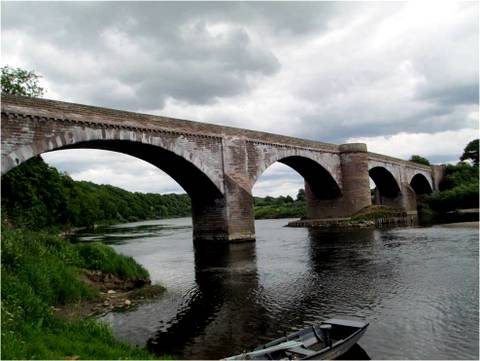 Norham has always been a busy crossing point for travellers over the fords on the river and along drovers’ roads. The perils of the River Tweed at Norham should never be underestimated: a substantial wooden bridge resting on stone pillars was built across the Tweed in 1840, in memory of the surgeon, Walter Ainslie who three years previously lost his life at the age of 36, crossing the water on his return from tending a Scottish patient at Horndean. The wooden structure has long since gone, and been replaced by the current stone structure which cost the Tweed Bridge Trust the sum of £10,668 on completion in 1887.
Norham has always been a busy crossing point for travellers over the fords on the river and along drovers’ roads. The perils of the River Tweed at Norham should never be underestimated: a substantial wooden bridge resting on stone pillars was built across the Tweed in 1840, in memory of the surgeon, Walter Ainslie who three years previously lost his life at the age of 36, crossing the water on his return from tending a Scottish patient at Horndean. The wooden structure has long since gone, and been replaced by the current stone structure which cost the Tweed Bridge Trust the sum of £10,668 on completion in 1887.
Men from the village fought in the Great War and in the Second World War; those who died are remembered on the War Memorial. The village was bombed and machine gunned by a German aircraft in 1941. Norham public hall, in the centre of the village and overlooking the village green, was erected by public subscription in 1889 at a cost of £1000 and continues to play an important role in village life today. The Village Green is common land and is home to the cross which is believed to have been erected in c.1200 and restored in the 1870‘s, whilst the Millennium Clock standing proudly at the crossroads was paid for by public subscriptions and unveiled on 1st January 2000 by Annie Thom and George Straughen Snr, the two oldest village residents at that time.
For much of the past, salmon netting has played a vital part in the economy of the village, but now the fishing shiels stand empty with just one fishery ‘Canny’ left at the Boathouse. Until 1987 the vicar would ‘Bless the Nets’ at the Pedwell fishery on the first night of the fishing season in February, in a ceremony which included the ‘Pedwell Prayer’.
The railway station at Norham was located about a ½ mile outwith the village. It was opened in 1849, but was closed in 1964 to passengers, and in 1965 to goods traffic.
Source: Norham 2007 Parish Plan (with permission). Images: John Box.
*********************************************************
Norham in 1862
An insight into the condition of some properties in Norham about a century and half ago can be seen in some reports by the Inspector of Nuisances for the Board of Guardians. Norham fell within the Berwick-upon-Tweed Union whose Guardians administered the Poor Law for the area; their concerns increasingly extended to cover matters of public health as well as poverty. The reports describe a number of individual houses and identify their occupiers by name.
Click here to download a transcript of the Norham reports (PDF file).
The original Minute Books from which the extracts are taken are held in Berwick Record Office.
Water supply
A scheme to improve the water supply in Norham in the 1880s is described here:
The Bow Well Water Scheme in Norham.
*********************************************************
The collections of Berwick Museum & Art Gallery include two paintings of Norham Castle, by George Reid and William Ferguson. There is also a landscape painting of the River Tweed at Norham by Frank W. Wood.
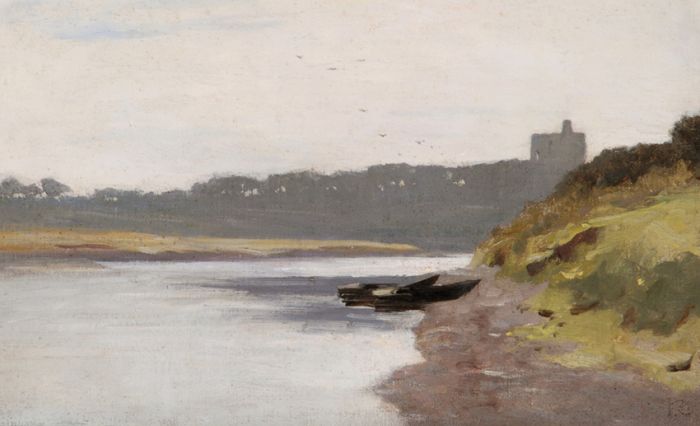
Norham Castle.
George Reid (1841-1913) was a Scottish painter born in Aberdeen, and was best known for his landscapes and portraits.

